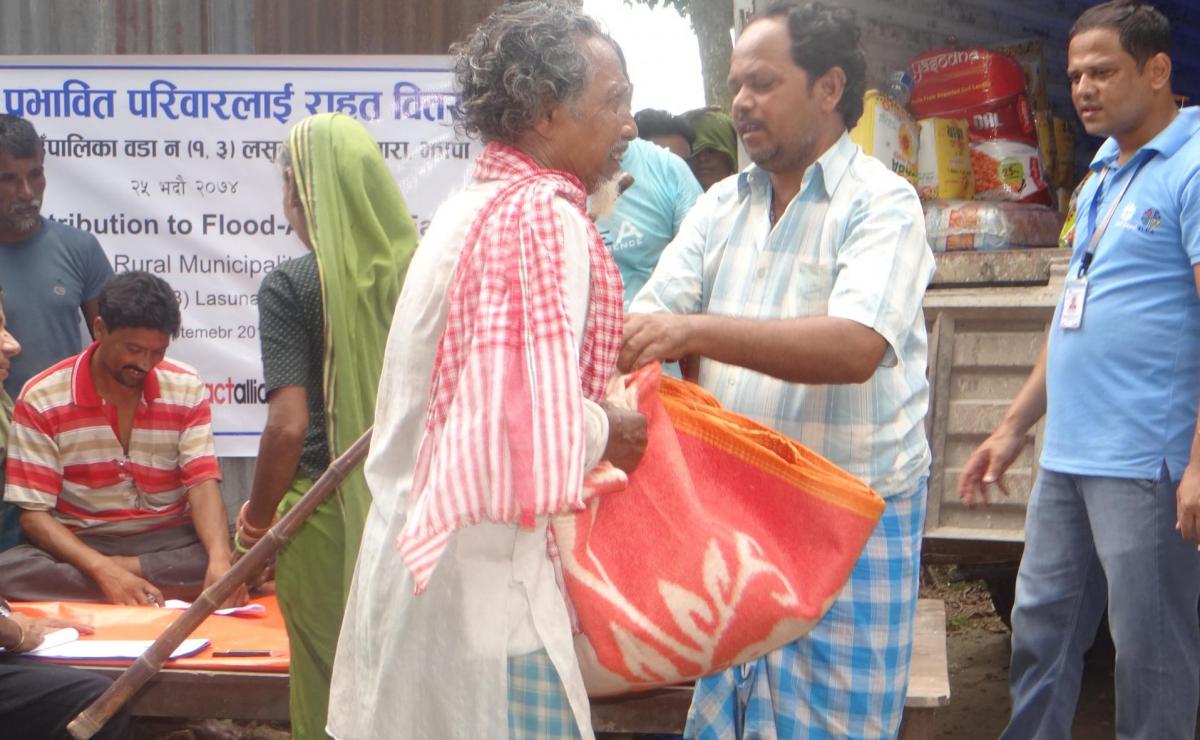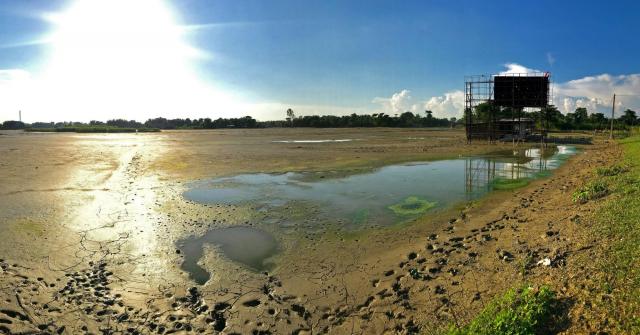LWF and Felm reach the unreached

Morang 30 August 2017 – In the aftermath of the massive floods in mid-August, The Lutheran World Federation (LWF) Nepal, a humanitarian and development agency, and Finnish Evangelical Lutheran Mission - Nepal (Felm - Nepal), a humanitarian organization, decided to upscale the relief and recovery support to the flood-affected people.
Immediately after the flood, LWF Nepal provided life-saving support to 151 neediest families of Rangeli Municipality ward no.2 and Dhanpalthan Rural Municipality (RM) ward no. 2 in Morang district. The floods not only swept away people, cattle, houses, food stock, clothes, household effects and standing crops, but also the dream of the poor and vulnerable people.
A high-level team led by Dr Prabin Manandhar, Country Director of LWF Nepal, and Ms Juhaninmäki Teressa, Regional Manager for Development Cooperation, along with other staff of both organizations visited some of the most affected areas of the district on 29 August. The team also included the representatives of Lutheran Community Welfare Society (LCWS), a local implementing partner of both organizations.
The objective of the visit was to devise plans for the early recovery of the flood-hit communities, particularly of the poorest and most vulnerable ethnic communities like, Musahar, and Santhal by acquiring first-hand information on the damage caused by the devastating floods there.
The team visited Meri Tole and Jharana Tole of Rangeli Municipality ward no. 2, Khayar Tole, of Dhanpalthan RM, and Sohal Tole of Jahada RM where representatives of local cooperatives and users committees, the newly elected local government representatives, aid workers and the flood-affected people participated in informal interactions. The people apprised the team of the hardship they went through, their immediate, mid- and long-term needs and expectation from the government and the non-government organizations.

During the interactions, Ms Teressa said that she was moved by the plight of the poor people hit hardest by the flood. “The people are in great need of humanitarian support to resume their normal life. We have planned to scale up our response in keeping with the widespread damage caused to the life and livelihood of the people,” she said.
The heads of the two organizations, after visiting the affected areas, decided to distribute additional relief materials to the neediest families of the Sohaltole of Jahada Rural Municipality in the district the same day.
“We saw people languishing in the absence of basic food even after two weeks of the flood. So we decided to distribute relief to 150 families on 30 August,” explained Dr Manandhar.
The next day, LWF Nepal and Felm Nepal distributed relief package to 165 flood-hit households (15 more than estimated) at Sohaltole. The relief package included staple food like rice, pulse, instant noodles, beaten rice, cooking oil, iodinated salt and blanket. Almost all the beneficiaries were from Santhal and Mushahar communities. Santhal is an indigenous tribe in the Terai while Musahar are considered as one of the lowest of the Dalit groups.
The relief package helped alleviate the suffering of some of the flood-affected people in Jahada RM. Although the village has more than 250 households, relief were provided to the selected most vulnerable families.
Many families in his village are waiting support from government and non-government agencies to reconstruct or repair their houses and restore their livelihood.
Text by Ram Sharan Sedhai, LWF Nepal, photo by Prajjwal Maharjan

